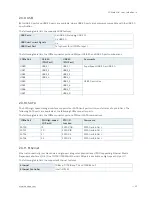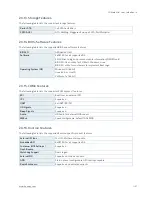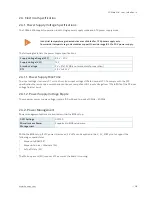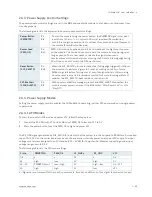
COMe-bKL6 – User Guide Rev.1.2
www.kontron.com
// 39
9.
Type
FPT –SAVEMAC –F <biosname.BIN>
10.
Wait until the program ends properly and then power cycle the whole system.
The system is now updated.
Depending on the state of the external SPI flash, the program may display up to two warning
messages printed in red. Do not stop the process at this point! After a few seconds of
timeout, flashing proceeds. For more information, refer to the EMD Customer Section.
3.2.3.
External SPI flash on Modules with Intel® ME
If booting from the external (baseboard mounted) SPI flash then exchanging the COM Express® module for another
module of the same type will cause the Intel® Management Engine (ME) to fail during the next start. This is due to the
design of the ME that bounds itself to every module the ME was flashed to previously. In the case of an external SPI
flash, this is the module present at flash time.
To avoid this issue, conduct a complete flash of the external SPI flash device after changing the COM Express®
module for another module. If disconnecting and reconnecting the same module again, this step is not necessary.
3.3.
Fast I2C
Fast I2C supports transfer between components on the same board. The COMe-bKL6 features an onboard I2C
controller connected to the LPC Bus. The I2C controller supports:
Multimaster transfers
Clock stretching
Collision detection
Interruption on completion of an operation
3.4.
UART
The UART implements an interface for serial communications and supports up to two serial RX/TX ports defined in
the COM Express® specification on pin A98 (SERO_TX) and pin A99 (SERO_RX) for UART0, and pin A101 (SER1_TX) and
pin A102 (SER1_RX) for UART1. The UART controller is fully 16550A compatible. UART features are:
On-Chip bit rate ( baud rate) generator
No handshake lines
Interrupt function to the host
FIFO buffer for incoming and outgoing data
3.5.
Dual Staged Watchdog Timer (WTD)
A watchdog timer or (computer operating properly (COP) timer) is a computer hardware or software timer. If there is
a fault condition in the main program, the watchdog triggers a system reset or other corrective actions. The intention
is to bring the system back from the non-responsive state to normal operation.
Possible fault conditions are a hang, or neglecting to service the watchdog regularly. Such as writing a “service pulse”
to it, also referred to as “kicking the dog”, “petting the dog”, “feeding the watchdog” or “triggering the watchdog”.
The COMe-bKL6 offers a watchdog that works with two stages that can be programmed independently and used
stage by stage.















































